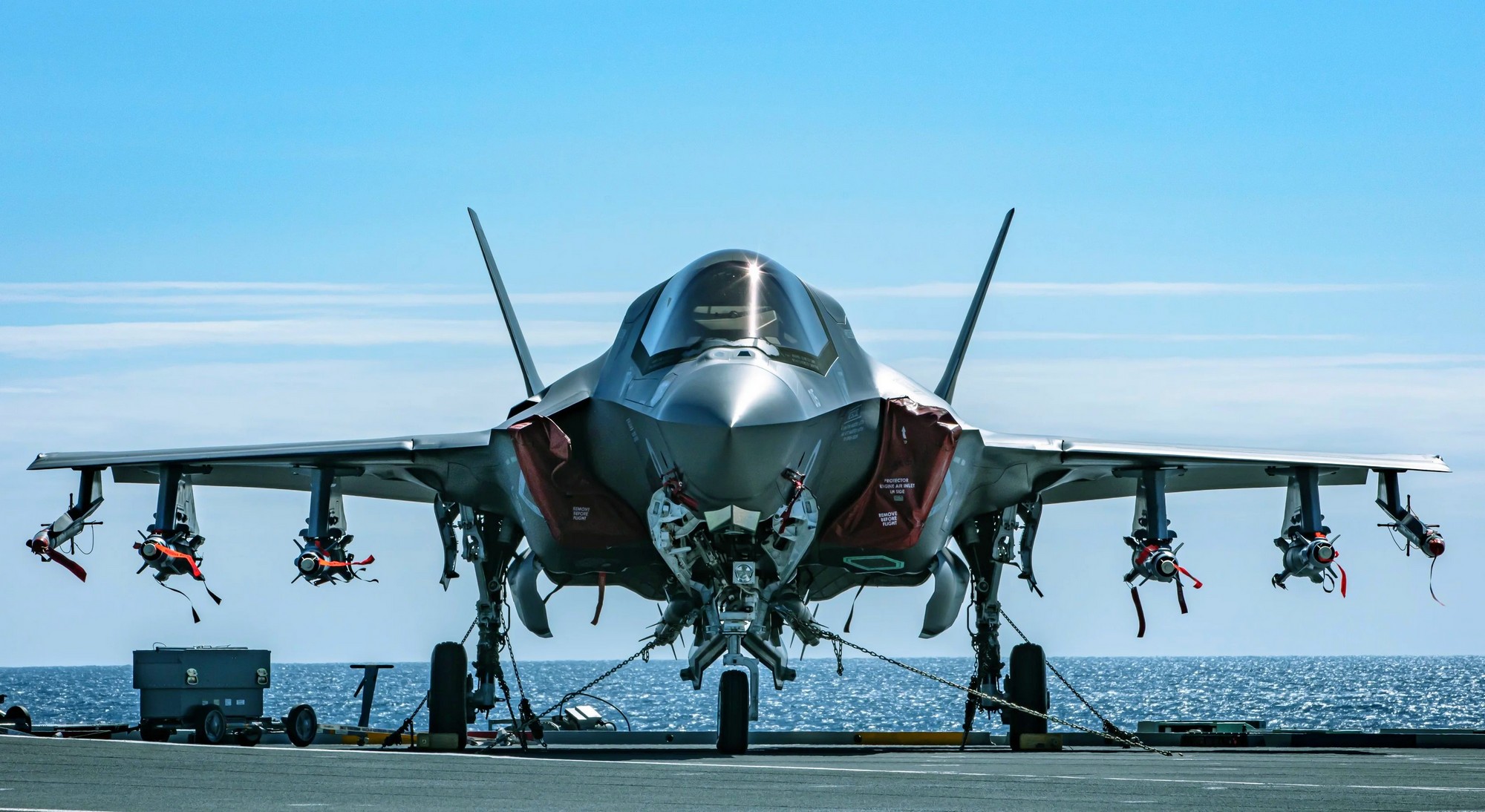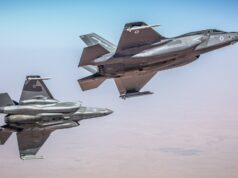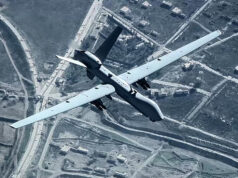When people describe the UK’s role in the F-35 fighter programme, they often invoke its early status as a “level one” partner, once a badge of influence at the heart of the world’s most advanced combat aircraft project.
Yet, as evidence to the House of Lords International Relations and Defence Committee showed last week, that position has changed.
Dr Sophy Antrobus of King’s College London told peers that the UK’s “level one partnership was for the systems development and demonstration part of the programme”, which no longer exists. “We are now equal partners in the production and in-service phases,” she said.
Even so, Britain’s early investment still carries weight. “Although we do not have that status anymore, it still contributes to our standing,” she noted, adding that 15 percent of every F-35 is built in the UK. Something heavily disputed.
That foundation remains valuable, but the country’s leverage has slipped as other partners have expanded their orders. Dr Justin Bronk of the Royal United Services Institute explained that “the tier one partner status was during the development process… at the time, we were buying by far the largest number of aircraft.” Britain once planned to buy 138 jets; it has ordered 48, with roughly 40 now in service.
Meanwhile, other countries have moved ahead. “Italy, Japan, Norway and the Netherlands all operate more jets than we do,” Bronk said. “Our participation in many practical areas has fallen significantly short of where our initial commitments were.” The result, he argued, is a polite but unmistakable awareness in Washington that London’s influence no longer matches its rhetoric.
The UK still holds a privileged position in some of the F-35’s most sensitive areas. Through the Australia Canada United Kingdom Reprogramming Laboratory, it can modify mission data and electronic warfare files, capabilities not granted to most other partners. Yet even that advantage is being eroded.
“Australia is increasingly competing with the UK for the most preferred partner spot,” Bronk observed. “It has more aircraft, flies them nearly twice as much, and is a constant presence in the Indo-Pacific.”
Britain remains a core ally, but its standing within the F-35 enterprise has evolved from prime mover to trusted contributor. The UK’s technical footprint endures, but its political and operational influence has thinned.














If Justin Bronk said it, it must be true. What’s the difference? Do we get some sort of prize for bringing Tier 1, maybe Lockheed will gives us a badge.
These are academic “experts” speaking to the House of Lords.
They have as much relevance as Reddit.
They still have more relevance than many of the ‘experts’ on here.
This is obviously a direct result of the paucity of UK orders of the aircraft-We still talk the talk but no longer walk the walk.
Don’t try and obfuscate with the old Tempest trope, as both Japan & Italy are involved in that project and have ordered more F35 jets than us.
We can always droll on the promise of Tempest Jam tomorrow I suppose.
Our rollout , and future projection of provision of the F35B is quite disheartening to be honest , and as for what difference it will make , lets see what happens with the AUKUS submarine project and how Australia fares in that- I think geopolitically we may be in for somewhat of a rude awakening.
I have to agree with you.
They will have been briefed and understand a lot more….
As for F35 it is pretty clear RAF went cold on it….as they don’t gave the budgets to run them hard as they are even more expensive than Typhoon per flying hour.
The 2002 decision to buy the F-35B rather than the F-35C was decisively influenced by the RAF’s requirement for a STOVL successor to the Harrier. The UK’s official requirement at that time was for 150 a/c (60 for the RN, 90 for the RAF). The planned 2012 IOC was based on reaching two frontline squadrons of 12 a/c each – so probably 40-50 aircraft delivered, with the rest to follow by 2018(!). At that date the RN still had a requirement for three front-line FAA squadrons of 12 a/c each (down from the four squadrons that had been approved in 1998), whilst the RAF wanted to re-equip four frontline Harrier squadrons and a large OCU. Come 2025 and we are instead aspiring to reach a final total of three frontline squadrons (drawing from a shared pool of a/c) by the early 2030’s, plus an OCU that in emergencies will have am operational nuclear role! With GCAP now devouring funding, the chances of the UK ever buying more than 75 F-35s (63 B’s and 12 A’s) seems minimal. And note that the oldest three UK F-35B’s have ceased to have any utility as they are way too out of date and can’t be upgraded, and at least another four are probably now only useful for training.
Caveat – before anyone tells me, I know that the JSF programme suffered from many delays which would have impacted UK, even if the money had been available.
Maybe things might have been different if Lockheed had kept up their end of the bargain. instead, the F-35 was years late being delivered and still doesn’t support British weapons. No wonder we’re avoiding any US involvement in GCAP.
‘Specialist ally’
That’s the UK through and through to be honest.
Basically we helped fuund the initial R&D and now thats done there is whats best for the US and other customers. Next time we need to require access to the code so we can walk away and develop integrations of our missiles and sensors if the US decides it’s politically better to slow the integration to ensure US exports of missiles etc.
What is it when it comes to Defence with our Politicians ? 🙄
Word waffle.
This looks to be a normal change, frankly overdue, as the aircraft transitions away from the initial design stages. I don’t think it reflects a change in British status in and of itself, unless of course, the other nations are still being referred to through the ‘Tier’ structure? I don’t think they are.
Yes exactly.
There is no such thing as tier structure now and tier never meant anything after development.
Every bit of work granted on F35 is done on a commercial basis.
We could order 200 F35’s tomorrow and it won’t make a bit of difference to our work-share or getting our weapons onboard.
The USA has just as many problems as we do and no one else has any weapons integrated. (Israel does its own)
There was a time when we talked about buying 150 Joint Strike Fighters but that quietly declined to 138 and now there must be some uncertainty about the final number.
60 in total A’s and B’s and that will be your lot
There’s always uncertainty about the final number because it relates to batch purchases over a couple of decades. Meanwhile technology marches on.
Specialist? More special needs ally
Or to use a technical term…”basket case”
So a none story then. The industrial experience gained and the skills, jobs and money made are not influenced by how many F35s the UK orders. The 5th gen design and manufacturing experience will bring huge benefits to Tempest development.
Here are some issues, first we all complain that we do not have enough F35s, which in many ways I agree with. At the same time we all complain that UK weapon systems are not intergrated into the F35, again we can all agree to that. Then if the MoD bought more F35s that cannot or are not compatible with UK weapon systems we also would all complain. I suppose rightly so.
So we have the follow further issues. The RAF/FAA have at this moment in time the largest fleet of F35Bs outside the US, however, we are also the only nation with a complete range of weapons that can be fitted to the Bs independent of US production.
So we have a chicken and egg situation with buying more F35Bs as we need them to carry British systems if they don’t have British systems then the orders would be slow. Or the other possibility is that we get permission to design the software for the Bs ourselves. We could also change tack and buy upto 72 F35Bs with US weapons for the FAA and F35As say 64 with UK/European weapon fit.
Doesn’t the 15 percent total include everything made by UK companies like BAE and RR at their sites in the US?
Meaning the actual amount produced in the UK by UK facilities and workers is a lot less.
US wants to close off F-35B production – orders drying up – to increase F-35A production – massive back order book.
Once the current US orders (and some have been converted to F-35C) and Japanese orders are fulfilled – that’s all folks for the F-35B and no more RAF F-35B orders an option.